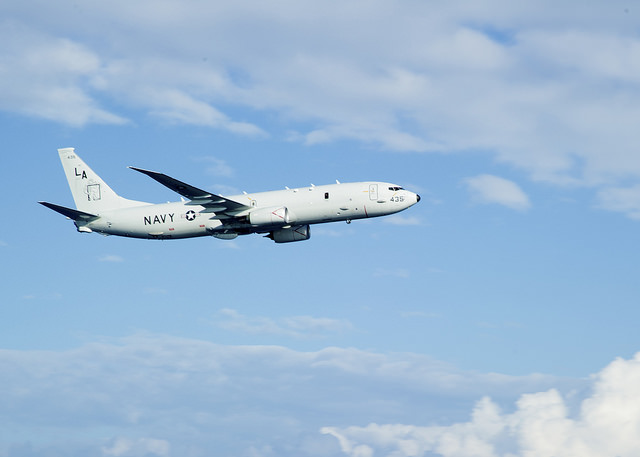Sidewinders on P-8s and MH-60Rs: deterring Chinese attacks on Australian aircraft

China’s continued attacks on aircraft patrolling the East Asian waters, including Australian aircraft, are unacceptable. But they’re encouraged by the targeted countries’ failure to equip their aircraft for self-defence.
Australia should rapidly equip its key maritime aircraft with Raytheon AIM‑9X Sidewinder air-to-air missiles. This would make Beijing think twice. Moreover, integrating the AIM-9X should be relatively straightforward and could bring Australia opportunities to help its friends in doing the same.
At least four times since 2022, Australian and Canadian aircraft operating legally in international airspace have been attacked by Chinese fighters. Each time, the fighters dropped projectiles—chaff or flares—close in front of the targeted aircraft, once within 30 metres. The drops were against Australia and Canada’s primary maritime patrol aircraft and naval helicopter types: Royal Australian Air Force P-8A Poseidons in 2022 and 2025, a Royal Australian Navy MH-60R Seahawk in 2023 and a Royal Canadian Air Force CH‑148 Cyclone in 2024.
Make no mistake: such tactics are attacks. They are air-to-air bombing that can severely damage or destroy the target if their projectiles hit. Flares burn hot enough to melt aluminium aircraft skin if embedded in the skin. And if an engine ingests flares or chaff, as happened in 2022, it may fail or catch fire, forcing a mission abort or even a crash.
China uses such aggressive tactics to drive away other nations’ aircraft from where they’re entitled to be but where it wishes they weren’t—such as the South China and Yellow Seas, where the four incidents occurred. Even where the projectiles don’t hit the target aircraft, its crew must take evasive action or go home. Then China has achieved its aim of disrupting foreign operations.
Beijing knows it can get away with it because there is minimal political and operational risk.
Because China hasn’t used normal weapons, such as guns and air-to-air missiles, it can pretend it has made no attack, which would be a severe escalation and risk open conflict. The Australian Department of Defence conforms to China’s pretence with media releases merely describing Chinese fighter pilots’ actions as ‘unsafe and unprofessional’.
Operationally, such attacks bring essentially no risk to Chinese pilots and their valuable aircraft. The fighters are far faster and more manoeuvrable than their targets—which also have no dedicated means of defence against other aircraft. The Chinese pilots need no more caution than is necessary for avoiding collisions. And their government has no reason to desist.
What’s needed is to add risk into Chinese calculations. A prompt, technically promising means of doing so is to undertake basic integration of an air-to-air missile, most obviously the AIM-9X, onto the Poseidon and Seahawk designs.
Even the most limited integration of any air-to-air missile—just enough so it can simply fire forwards from its host aircraft—would dramatically raise the stakes for Beijing. Chinese fighter pilots could not come close enough to bomb the target without knowing they are exposing themselves to being shot down. Their alternative would be to use weapons such as guns or missiles to attack the target from a distance, but thus clearly showing China as the escalatory aggressor.
No other Poseidon or Seahawk users are known to be integrating air-to-air missiles on those types. Canberra going alone might seem foolish given Australia’s poor record in such projects. Yet integrating the AIM-9X should not be unusually difficult.
Electronically, the missile is largely self-contained, with an infrared seeker that can independently find targets. So, a host aircraft needs only basic communications with it to confirm the target and to fire. The AIM-9X is smaller and lighter than various weapons that P‑8As and MH-60Rs already carry externally, suggesting physical factors such as weight and drag would present no great problems.
Moreover, basically the same thing has been done before. Britain rapidly fitted Nimrod maritime patrollers with Sidewinders during the Falkland’s War. And the United States has integrated the AIM-9X onto AH-1Z helicopters, which are smaller and less powerful than the Seahawk.
Finally, the AIM-9X serves with the RAAF and armed forces of 26 other countries. If Australia gains expertise in fitting it to P-8As and MH-60Rs, it can offer the knowhow to friends, including the United States, and maybe do the modification work.
Arming Poseidons and Seahawks cannot be guaranteed to make China back off. But it would at least force it to think twice.

